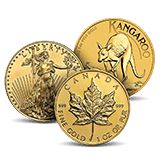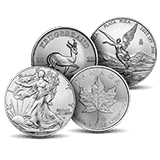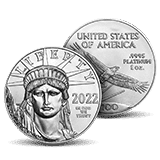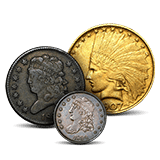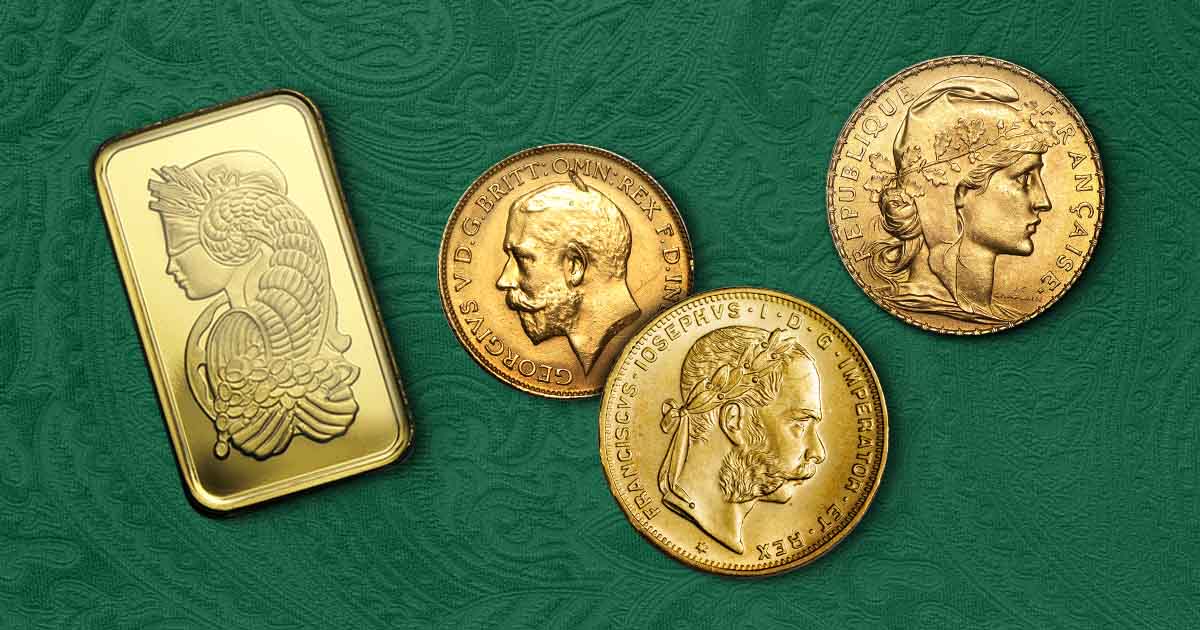
Buying fractional gold on a budget is possible and doable. By being especially selective in the products you choose, you can eliminate a substantial amount of the premium you pay.
The premium is the amount that is paid over the spot price of gold. The premium covers everything from extraction and mining to manufacturing and minting.
Buying Fractional Gold Products Works for Most Budgets
One option would be targeting products like 10 gram PAMP gold bars with a mere 7.3% premium as of November 2023.
Gold products like this gold bar are considered fractional gold. They contain a fraction of an ounce of gold.
If you can only afford to buy a few grams of gold per month, buying ten gram gold bars should provide a lower premium than single gram gold products. Buying 10 gram gold bars two to four times per year results in up to 40 grams of gold per year, a sizable increase over a single ounce of gold per year.
If you find that premium has risen, there is another option. What we will be targeting are fractional gold products with lower premiums over the gold spot price. This is fortunate since the products it will include are historic.
Buying Fractional Gold Coins
Let’s get familiar with vintage gold coins.
Particularly, let’s get familiar with Pre-WWI European gold coins, as these have some of the lowest premiums available.
Among the gold coins we would encourage you to consider for fractional gold investments are the French 20 Franc Rooster, Swiss Helvetia, and the British Gold Sovereign.
Another option is the Gold 10 Pesos. The Ten Peso gold coin has almost a quarter ounce of gold content and a low premium of 5.5%.
One of the lowest gold premiums that can be had at the time of this writing is the Mexico Gold 10 Pesos. This random year AU-BU 90% gold coin carries just less than a quarter ounce of gold and was primarily issued from 1905-1959. While it may seem counter-intuitive to buy these, as they should have greater numismatic value, the ones we will suggest do not. These will be ungraded and uncertified fractional gold coins, which carry a lower cost than graded coins.
While we encourage you to exercise caution when buying these on a third-party market like eBay, APMEX only distributes genuine coins.
Benefits of Investing in Fractional Gold
What are the benefits of buying fractional gold?
Investing in fractional gold and gold by the gram is more affordable than buying a full ounce since the price of gold per gram is lower than the price for an ounce of gold. Although it may carry a higher premium, shopping for fractional gold and gold by the gram with the methods described above can greatly reduce the amount you pay in premiums.
Drawbacks to Investing in Fractional Gold
While there are numerous benefits to buying fractional gold, it is imperative to understand the drawbacks. One of the primary disadvantages of buying fractional gold products is illiquidity in smaller markets, where the demand for fractional gold will not be as robust as it will be for full ounces of gold.
Depending on where you live, you may find some liquidity by investing in Goldbacks, which can be spent like currency with a growing number of participating businesses. However, this requires living in one of the U.S. states that recognize gold and silver as legal tender.
Dollar Cost Averaging
Another option to consider is dollar cost averaging. In this method, you determine your annual budget and invest equal amounts every month or other determined time period.
Using the DCA method, you can take advantage of market dips, but there is the caveat that you will make some gold purchases with higher premiums. However, market growth year over year may result in a net profit.
Buying Secondary Market Gold
Buying secondary market gold is another stellar strategy for maximizing every dollar and cent spent. Secondary market precious metals provide one of the lowest premiums available on the market, as well as a broad range of options.
One of the downsides to purchasing secondary market gold is that several manufacturers’ products may be lumped into one product listening and you will not be able to choose which gold brand product you will receive.
How To Calculate the Premium
To calculate the premium on a precious metal product:
- Divide the purchase price by its weight in troy ounces. This will show how much you have paid per ounce.
- Subtract the spot price from the price you paid to see the dollar amount you paid in premiums.
- Divide this number by the spot price to convert this into a decimal.
- Convert the decimal to a percentage and find the premium percentage.
To illustrate, let’s say you buy a half ounce gold coin for $80 and the spot price is $100 per ounce.
Dividing 80 (the price paid) by 0.5 (the number of ounces) gives us 160. You’re paying $160 per ounce.
Subtracting the amount you are paying per ounce (160) from the spot price (100) is 60. You’re paying a $60 premium.
Dividing this premium (60) by the spot price (100) yields 0.6. This is the premium you’re paying as a decimal.
To convert this decimal to a percentage, multiply it by 100.
Multiplying the premium paid as a decimal (0.6) by the spot price (100) is 60.
The premium paid on an $80 half ounce gold coin with a spot price of $100 is 60%.
Most premiums will be lower and the spot price of gold, higher.
The Right Strategy for Your Portfolio
Which investment strategy is right for you? There are a slew of factors to keep in mind, such as risk tolerance, time until retirement or liquidation, and more.
The best strategy is one that works with your goals and one budget. We encourage you to consult a financial adviser who can take the factors and budget you are working with to plan a custom strategy.

